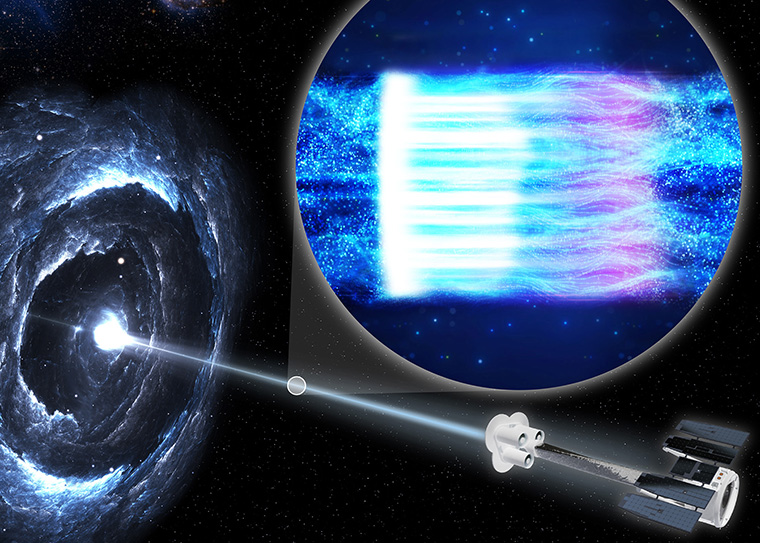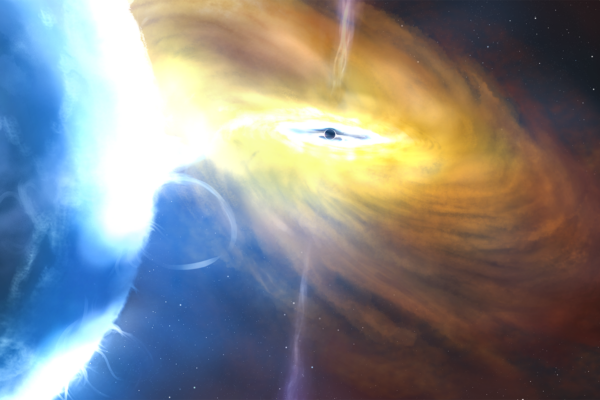Some of the brightest objects in the sky are called blazars. They consist of a supermassive black hole feeding off material swirling around it in a disk, which can create two powerful jets perpendicular to the disk on each side. A blazar is especially bright because one of its powerful jets of high-speed particles points straight at Earth. For decades, scientists have wondered: How do particles in these jets get accelerated to such high energies?

NASA’s Imaging X-Ray Polarimetry Explorer, or IXPE, has helped astronomers get closer to an answer. In a new study in the journal Nature, authored by a large international collaboration, astronomers find that the best explanation for the particle acceleration is a shock wave within the jet.
Manel Errando, an assistant professor of physics in Arts & Sciences at Washington University in St. Louis, and a faculty fellow of the McDonnell Center for the Space Sciences, is part of the team that analyzed the IXPE data.
“This is a 40-year-old mystery that we’ve solved,” said Yannis Liodakis, lead author of the study and astronomer at FINCA, the Finnish Centre for Astronomy with European Southern Observatory. “We finally had all of the pieces of the puzzle, and the picture they made was clear.”
Launched in December 2021, the Earth-orbiting IXPE satellite, a collaboration between NASA and the Italian Space Agency, provides a special kind of data that has never been accessible from space before. This new data includes the measurement of X-ray light’s polarization, meaning IXPE detects the average direction and intensity of the electric field of light waves that make up X-rays.
The new study used IXPE to point at Markarian 501, a blazar in the constellation Hercules. This active black hole system sits at the center of a large elliptical galaxy.
“When we see X-ray emission, we know that we are looking at extremely powerful processes capable of giving large amounts of energy to the particles in the jet,” Errando said. “If you compare our observations with those from optical telescopes, the X-ray signal shows a higher polarization, indicating that the region of the jet producing X-rays is more compact.”
After comparing their information with theoretical models, the team of astronomers realized that the data most closely matched a scenario in which a shock wave accelerates the jet particles. A shock wave is generated when something moves faster than the speed of sound of the surrounding material, such as when a supersonic jet flies by in our Earth’s atmosphere.
Read more on the NASA website.



